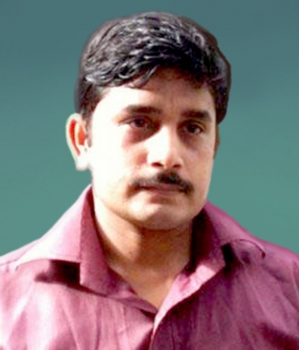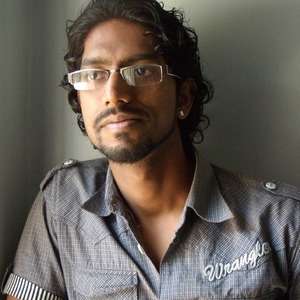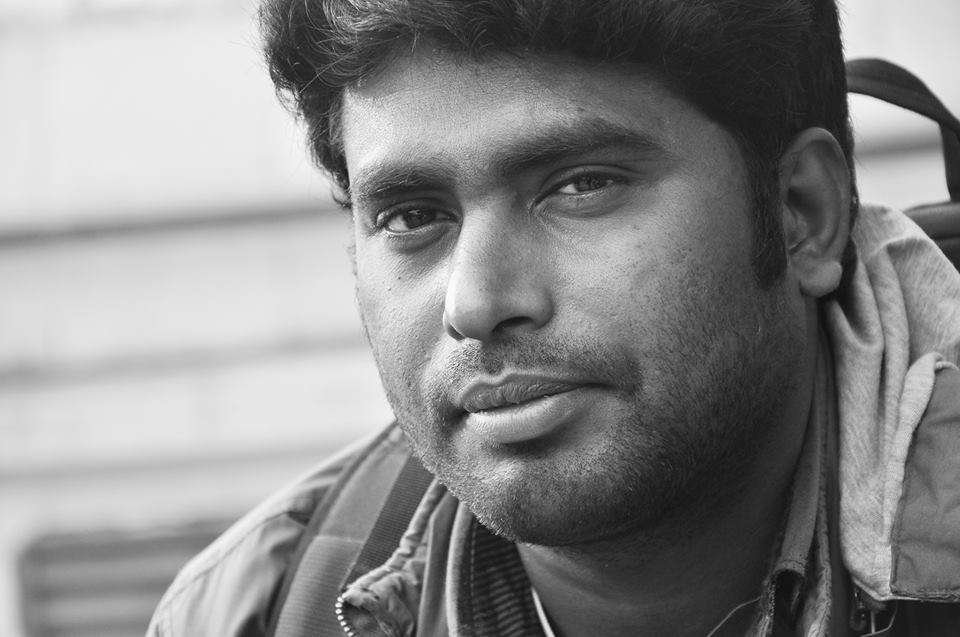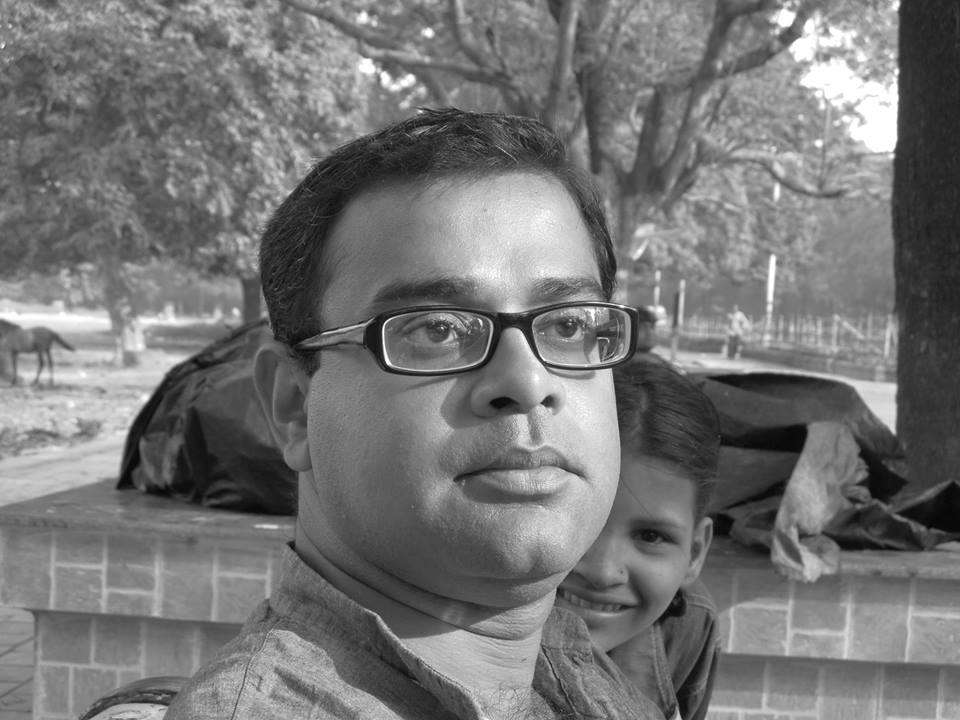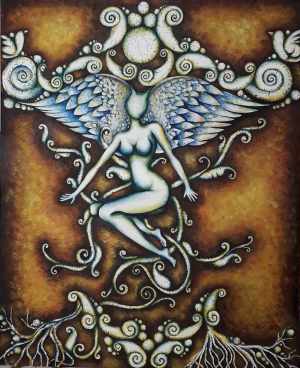
In 1947, India became independent and group of six artists - K. H. Ara, S. K. Bakre, H. A.Gade, M.F. Husain, S.H. Raza and Francis Newton Souza - founded the Bombay Progressive Artists' Group in the year 1952, to establish new ways of expressing India in the post-colonial era.
It considerably changed the scene of Indian art and artists became flexible in rationally painting their imagination and experiences, leading to new post-independence India. Almost all India's major artists in the 1950s were associated with the group. Some of those who are well-known today are Bal Chabda, Manishi Dey, V. S. Gaitonde, Krishen Khanna, Ram Kumar, Tyeb Mehta, K. G. Subramanyan, A. Ramachandran, Devender Singh, Akbar Padamsee, John Wilkins, Himmat Shah and Manjit Bawa.
Present-day Indian art is varied and among the best-known artists of the newer generation include Bose Krishnamachari and Bikash Bhattacharjee.
Painting and sculpture remained important in the latter half of the twentieth century. In the work of leading artists such as Nalini Malani, Subodh Gupta, Narayanan Ramachandran, Vivan Sundaram, Jitish Kallat, found radical new directions.
Bharti Dayal has chosen to handle the traditional Mithila painting in most contemporary way and created her own style through the exercises of her own imagination.
The increase in discourse about Indian art, in English as well as vernacular Indian languages, changed the way art was perceived in the art schools.
Critical approach became rigorous; critics like Geeta Kapur, R. Siva Kumar, Shivaji K. Panikkar, Ranjit Hoskote, amongst others, contributed to re-thinking contemporary art practice in India.
Famous Indian artists of all times and their famous genres of art
M.F. Husain from Maharashtra, a self-taught artist. In 1947 his first exhibition was conducted at the Bombay Art Society where his painting Sunhera Sansaar was shown.
By the 1960s, his paintings were exhibited in the art galleries of Prague and Zurich. Husain soon evolved as modern Indian art due to his fearless depiction of his imagination, as well as, his willingness to absorb international influences.
He was Padma Bhushan awardee.
Amrita Sher-Gil was among the greatest women artists of the 20th century. Her work especially the famous portrait paintings is considered among the most famous Indian artist. Born in Budapest, her aesthetic sensibility was a blend of European and Indian elements.
With an excellent command over handling of oils and brushwork, Sher-Gil’s famous self-portraits are deep wherein one discovers femininity and sense of melancholy in the faces.
19th century Raja Ravi Varma defined the images of our gods and goddess, with his most famous work being of ‘Lakshmi paintings’.
He used European realism and art techniques for depicting Indian gods and mythological characters, which gradually shaped Indian ‘calendar art’ and deeply influenced our literature as well as film industry.
Rabindranath Tagore took up drawing and painting and successful exhibitions of his many works in Paris and upon encouragement by artists, his exhibitions were held throughout Europe. Due to some problem, his works exhibited strange colour schemes and off-beat aesthetics.
Tagore was influenced by numerous styles, including scrimshaw, New Ireland, Papua New Guinea, Haida carvings from the Pacific Northwest region of North America, and woodcuts by the German Max Pechstein.
India's National Gallery of Modern Art lists 102 works by Tagore in its collections.
Closure
These are names of just some among many Indian artists. In addition to already established Indian artists, changing era is nurturing many new generation artists as well. These artists are very versatile and dynamic in their art.
Changing scene of world, new technology, and more evolved minds are, vehicles of continued success taking art in the forward and more enlightened version of it.
Meet these new and dynamic artists on Indianartideas and experience the oneness with the changing world and evolving minds and thinking.
Prints: emerging face of new trending art

What is Print art?
Prints are works of art which allow multiples in almost identical forms of the initial image.
Print is a picture of which more than one copy exists. A painting is a one-off created by hand, whereas prints are usually multiples.
Sometimes prints are a reproduction of a painting, SOME OTHERS ARE JUST PRINTS. They are not painting’s reproduction in bulk. Rather they are original works but produced in bulk units.
History of Prints in India
In India from 1556 an era for this form of art, gained prominence with the Portuguese bringing in the printing press to Goa. The demand for printed images for calendars, books and other publications grew in the 1870s.
Munshi Newal Kishore founded the first press in Lucknow called Newal Kishore Press and Book Depot in 1858.
During the second decade of the 20th century, huge transformation of the role of printing as a creative medium was established by Abanindranath Tagore, Gaganendranath Tagore and Samarendranath Tagore. They collectively found the Bichitra Club to explore new forms of painting and printmaking with woodcuts and lithography. Another prominent student of this club was Mukul Chandra Dey, who was taken to America by Rabindranath Tagore in 1916 to learn the technique of etching from James Blinding Slone.
Printmaking became popular in India during 1921 with Nandalal Bose introducing it to Kala Bhavan in Santiniketan. From his visit to China and Japan in 1924, he brought back Chinese rubbings and Japanese colour woodcut prints. Chittaprosad and Somnath Hore used linocuts and woodcuts to disseminate leftist ideologies, reformist concerns and socio-political critique of events like the Bengal Famine of 1943 and the Tebhaga movement.
In 1955, a renewed energy was instilled in Delhi, outlining techniques of multi-colored intaglio and calligraphy.
K.G. Subramanyan incorporated lithography, etching and serigraphy in his art practice. He transformed them into children’s book illustrations which were then published.
Then, introduction of graphic arts in the year 1969 gave new direction to the print art.
The introduction of digital technology and mechanized software led to a significant transformation in the field of printmaking. In its experimental form, interesting visual vocabulary.
Techniques of Indian Art Prints
Printmaking techniques are divided into the following categories:
- Relief, where ink is applied to the original surface of the matrix, while carved or displaced grooves are absent of ink. Relief techniques include woodcut or woodblock, wood engraving, and metal cut.
- Intaglio, where ink is forced into grooves or cavities in the surface of the matrix. Intaglio techniques include calligraphy, engraving, etching, mezzotint, aquatint.
- Planographic, where the matrix retains its original surface, but is specially prepared and/or inked to allow for the transfer of the image. Planographic techniques include lithography, monotyping, and digital techniques.
- Stencil, where ink or paint is pressed through a prepared screen.
Contemporary printmaking includes digital printing, photographic mediums, or a combination of digital, photographic, and traditional processes.
Woodcut
Artist either draws a design directly on a plank of wood, or transfers drawing done on paper to a plank of wood. Traditionally, the artist then handed the work to a technician, who then uses sharp carving tools to carve away the parts of the block that will not receive ink. In the Western tradition, the surface of the block is then inked with a brush. Then a sheet of paper is placed over the block. The block is then rubbed or is run through a printing press.
Engraving
To make a print, the engraved plate is inked all over, then the ink is wiped off the surface, leaving only ink in the engraved lines. The plate is then put through a high-pressure printing press together with a sheet of paper (often moistened to soften it). The paper picks up the ink from the engraved lines, making a print. The process can be repeated many times; typically, several hundred impressions (copies) could be printed.
Digital Printing
Printing use digital printers such as inkjet printer. Images can be printed to a variety of substrates including paper, cloth, or plastic canvas. With digitalization, digital prints are evolving more and more.
Way to know, explore and buy more.
There are many more techniques of Indian art print. Each artist has his unique style and method of art. Some prefer doing art in single way, some love experimenting with different styles and techniques all-together.
Indian Art Ideas is emerging leader in the world of art prints. Here, customers for enjoy various choices of prints across numerous genres which includes abstract prints, modern prints, landscape prints and canvas prints. Right from an elaborate collection of folk art prints to a massive assortment of the latest contemporary prints, Indian art ideas is a treasure house for amazing Indian art prints.
If you are interested in knowing more about Indian art print styles, visit ’sketches’ section of our art gallery under ‘sell art’ heading, on website Indianartideas.
We await your inquisitive presence!











